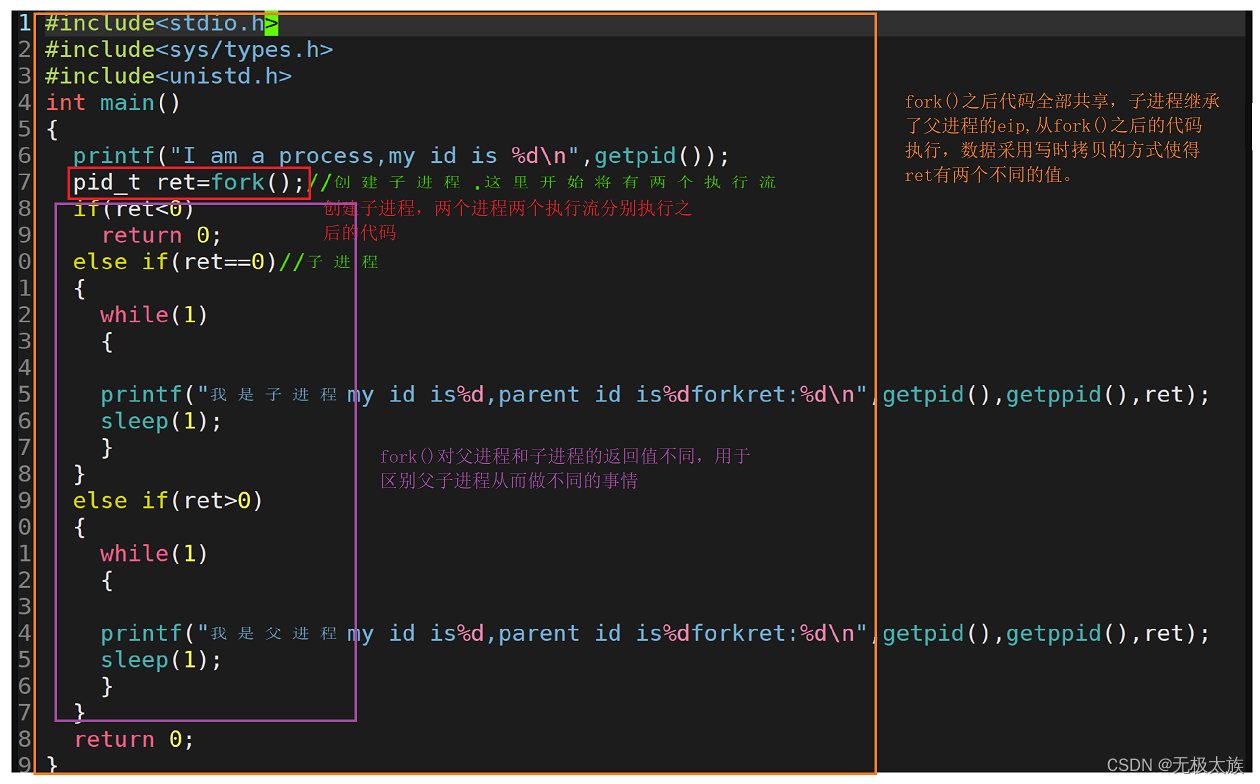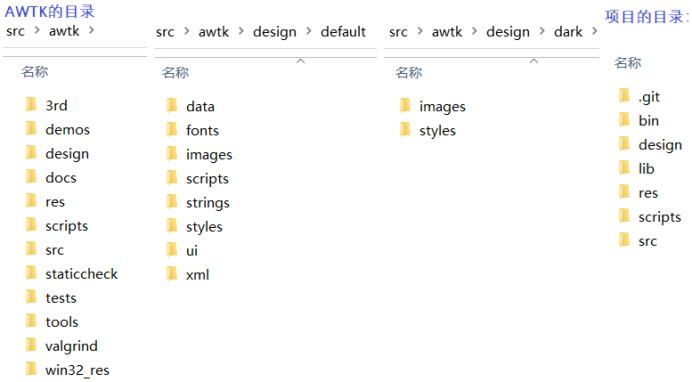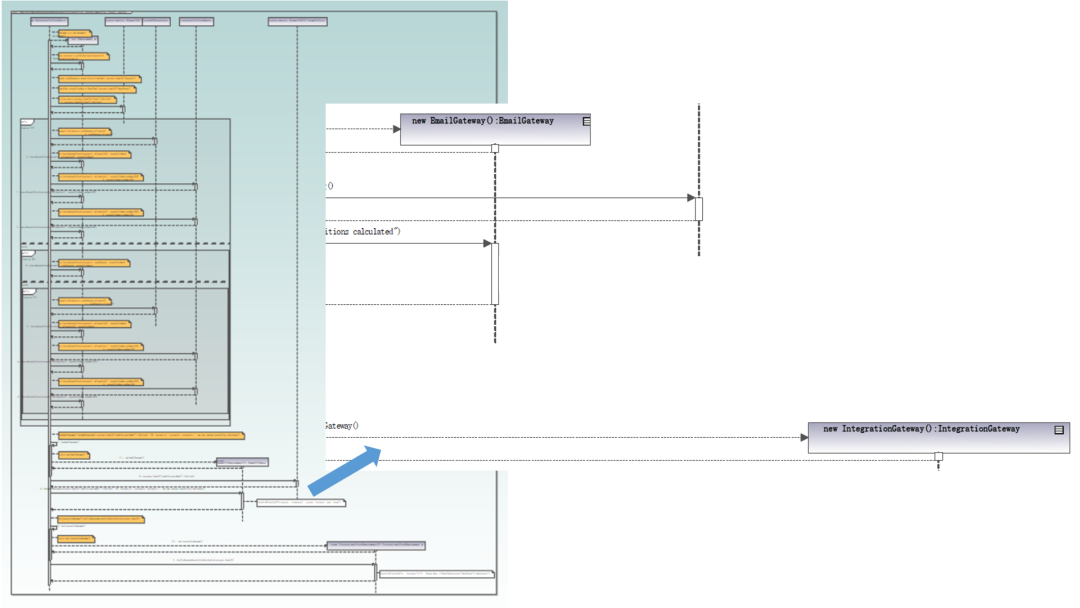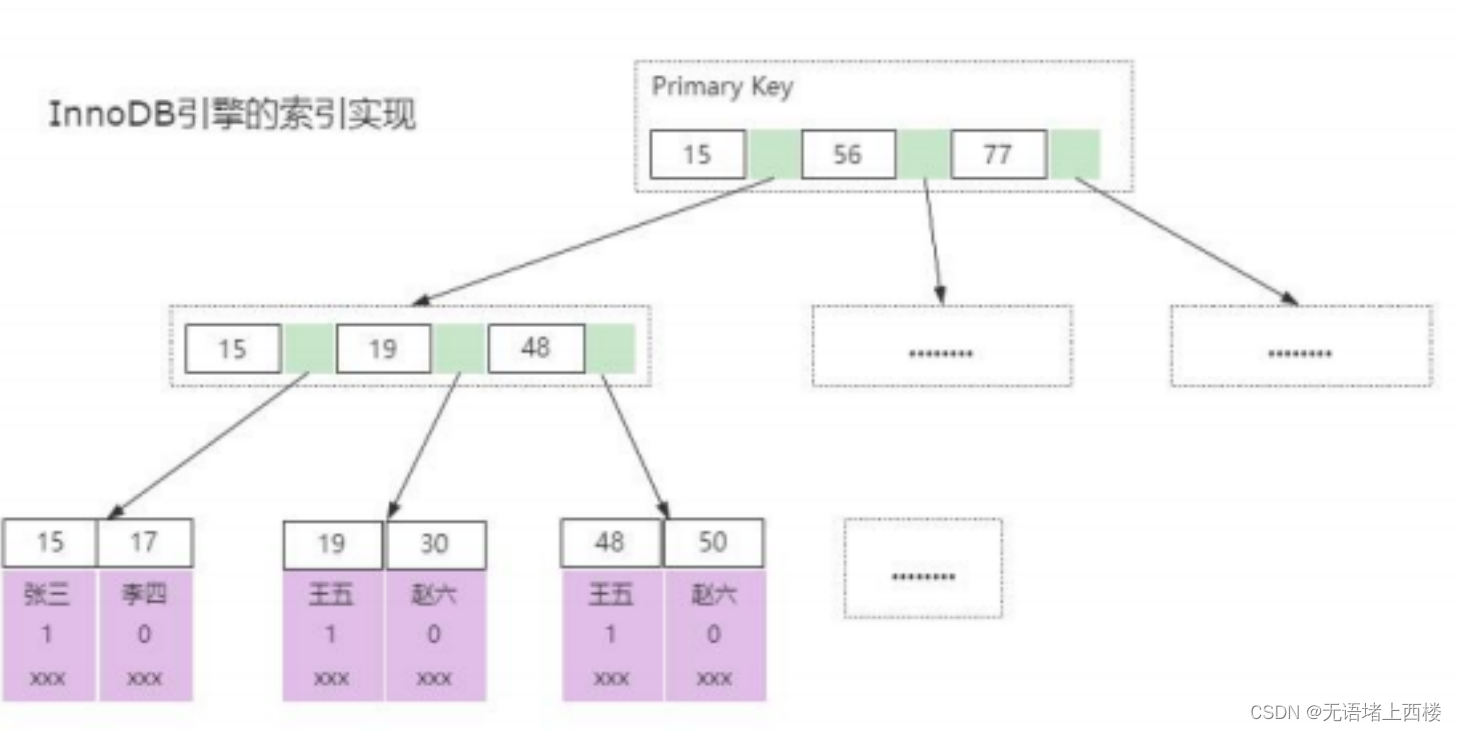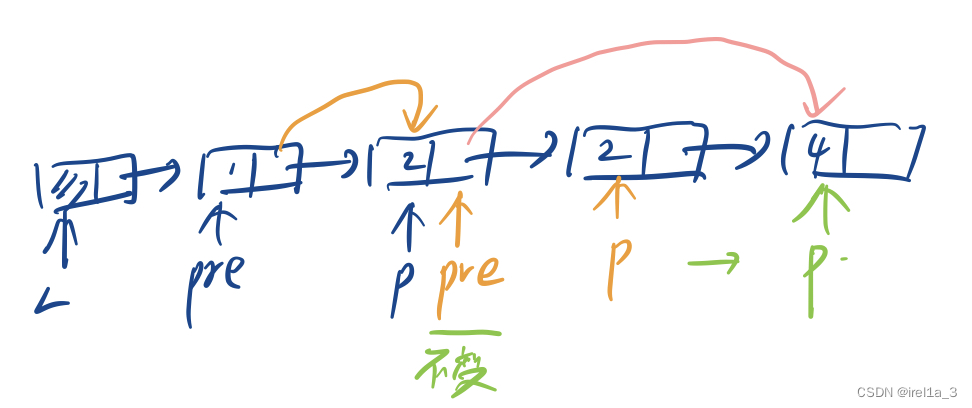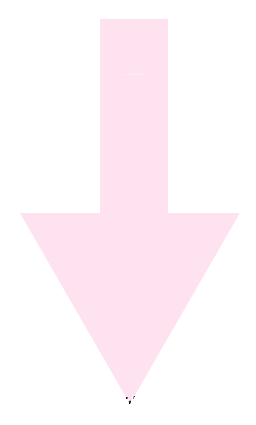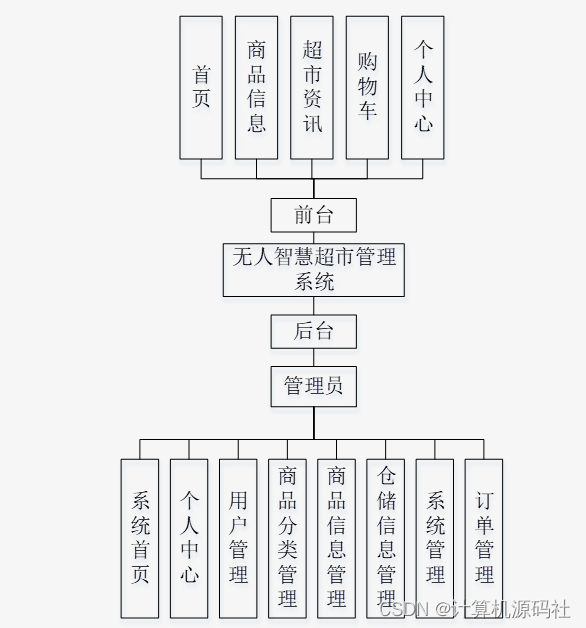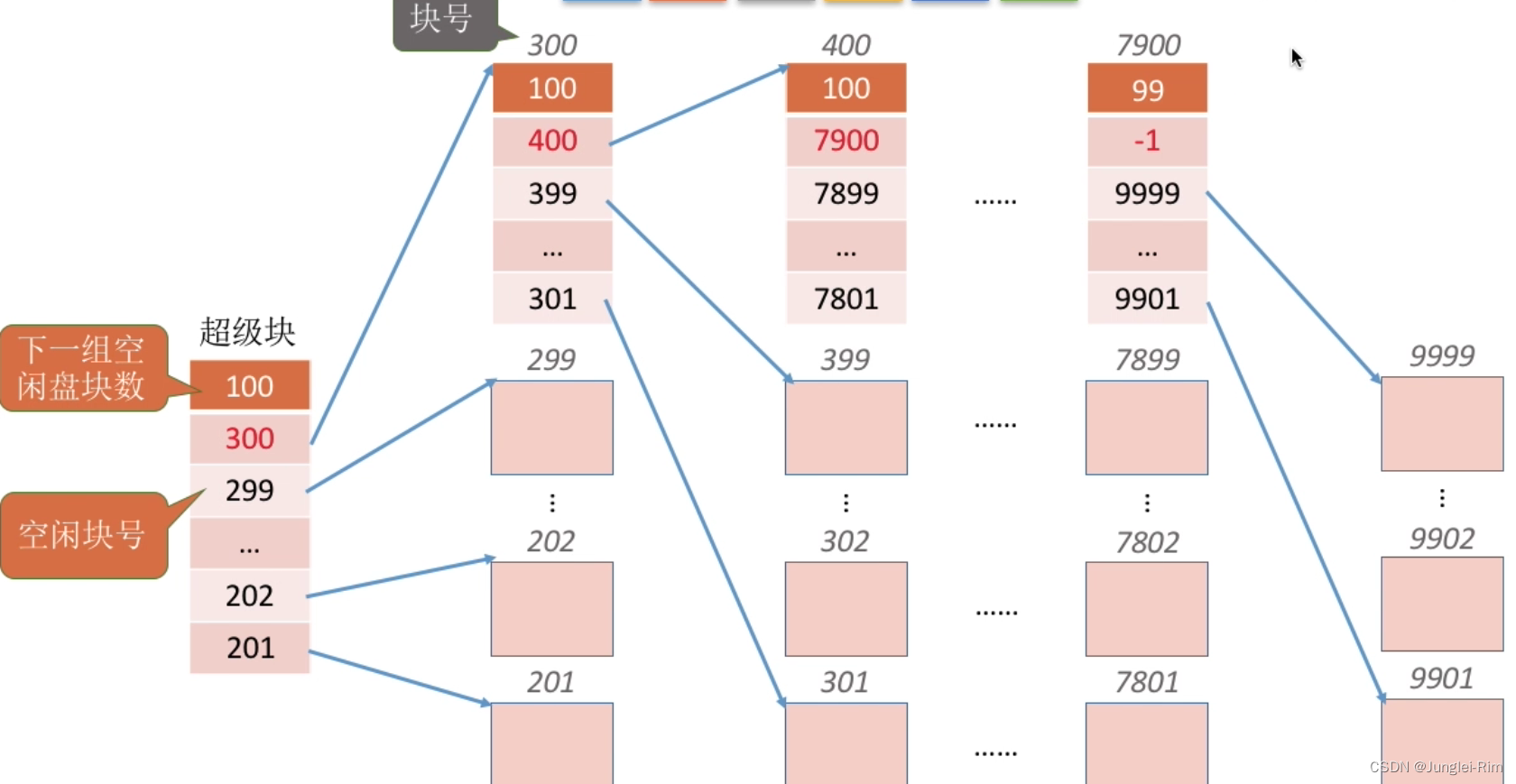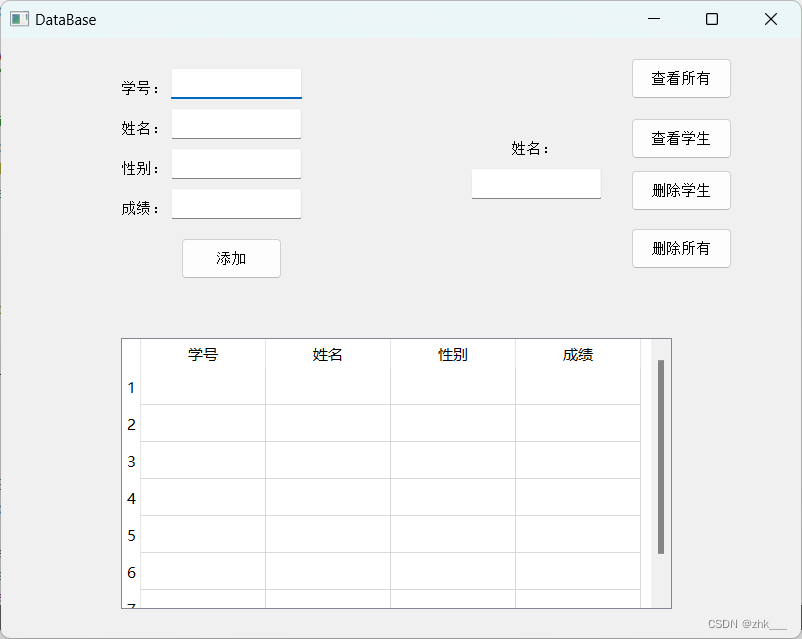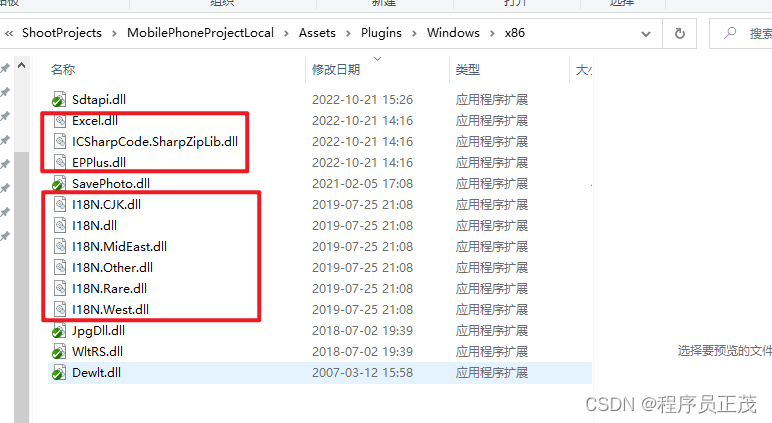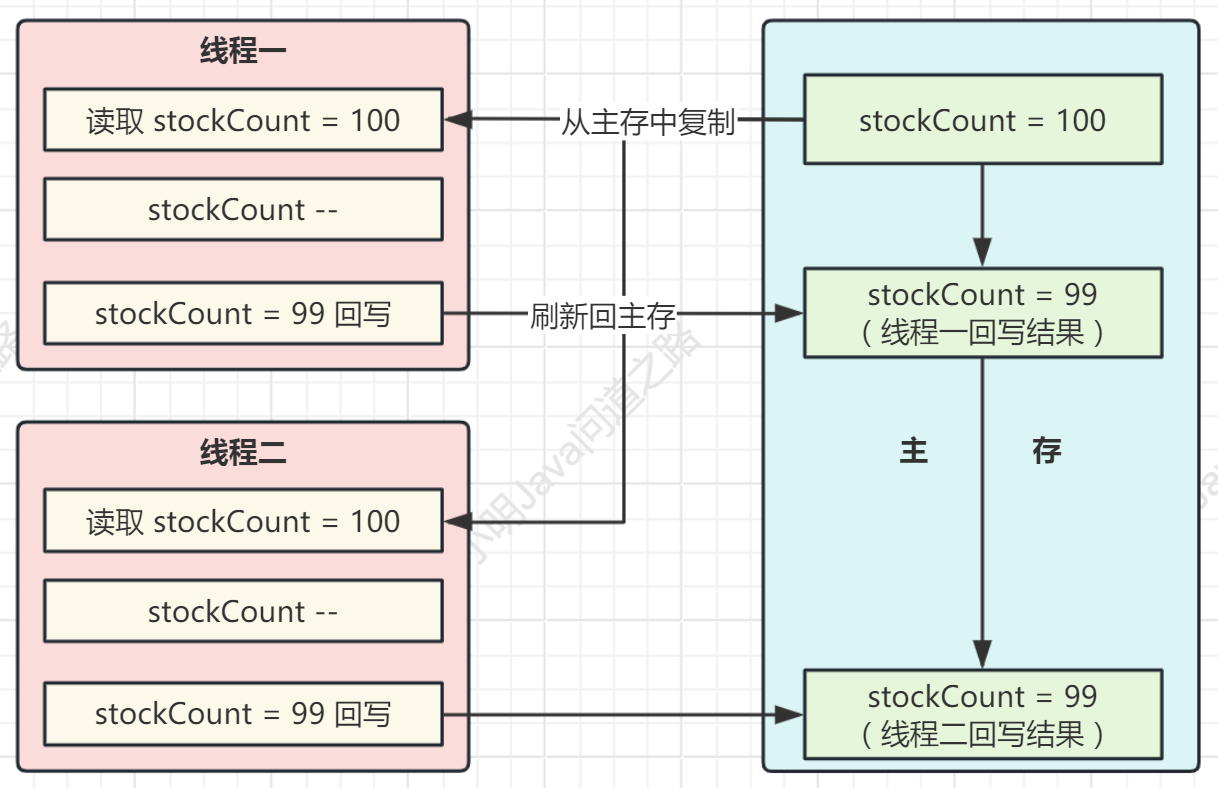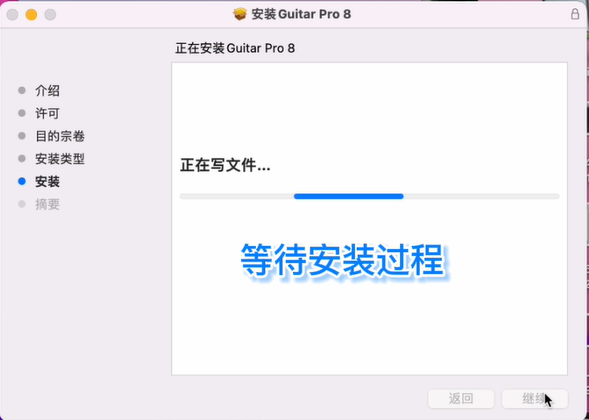目录
1. 前言
2. 预备知识
3. 用osg实现三维Cardinal曲线
3.1. 工具/ 原料
3.2. 代码实现
4. 说明
1. 前言
在设计矢量图案的时候,我们常常需要用到曲线来表达物体造型,单纯用鼠标轨迹绘制显然是不足的。于是我们希望能够实现这样的方法:通过设计师手工选择控制点,再通过插值得到过控制点(或在附近)的一条平滑曲线。在这样的需求下,样条曲线诞生了。简而言之,样条曲线是由多个多项式按比例系数组成的多项式函数,而比例系数是由控制点决定的。Hermite曲线、Cardinal曲线在平时的开发中,经常用于模拟运动物体的轨迹,如下:
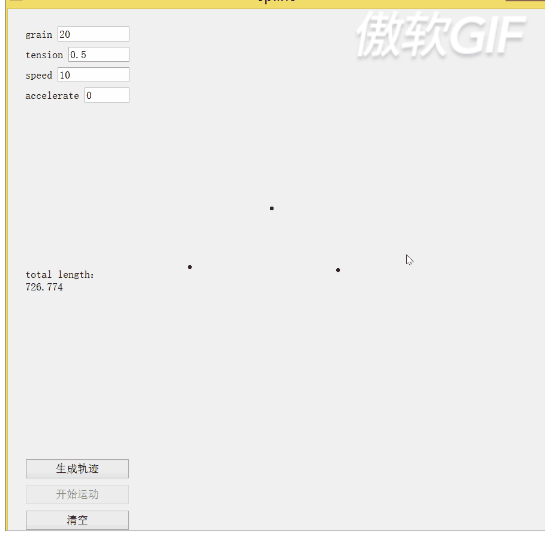
以上是二维Cardinal曲线效果,如何用osg实现三维的Cardinal曲线,且物体(本例指球体)沿着Cardinal曲线运动呢?即像下面那样:
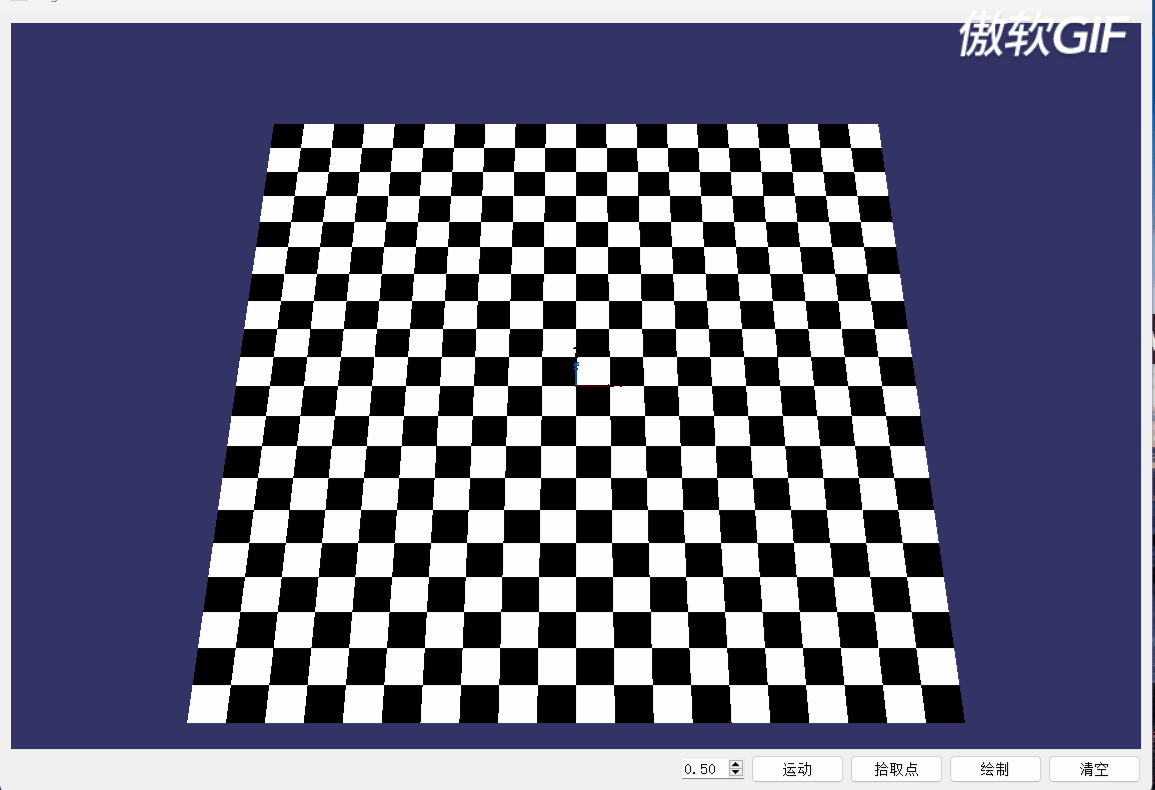
即:
- 单击“拾取点”按钮,该按钮文字变为“关闭拾取点”,此时可以用鼠标在棋盘格上单击,点击的点用红色圆圈表示。
- 当所有的点都拾取完,单击“绘制”,可以绘制三维Cardinal曲线。
- 当绘制完三维Cardinal曲线后,再次用鼠标在棋盘格上单击,单击“绘制”,可以绘制新的三维Cardinal曲线。
- 单击“关闭拾取点”按钮,鼠标在棋盘格上单击时,无法拾取点。
- 调整阈值,可以更改曲线的圆滑度,使曲线从圆滑变为直线。
- 单击“运动”按钮,生成一个蓝色的球体,且该球体沿着Cardinal曲线运动。
2. 预备知识
在阅读本博文之前,请阅读以下博文,否则很难看懂本博文。
- [计算机动画] 路径曲线与运动物体控制(Cardinal样条曲线)。
- 三次参数样条曲线与Cardinal曲线。
- Qt实现三次样条Cardinal曲线。
- osg实现三次样条Cardinal曲线。
3. 用osg实现三维Cardinal曲线
3.1. 工具/ 原料
开发环境如下:
- Qt 5.14.1。
- Visual Studio 2022。
- OpenSceneGraph 3.6.2。
3.2. 代码实现
main.cpp
#include "osgCardinal.h"
#include <QtWidgets/QApplication>
int main(int argc, char *argv[])
{
QApplication a(argc, argv);
osgCardinal w;
w.show();
return a.exec();
}myEventHandler.cpp
#include "myEventHandler.h"
#include<osgViewer/Viewer>
bool myEventHandler::handle(const osgGA::GUIEventAdapter& ea,
osgGA::GUIActionAdapter& aa,
osg::Object* obj, osg::NodeVisitor* nv)
{
auto pViewer = dynamic_cast<osgViewer::Viewer*>(&aa);
auto eventType = ea.getEventType();
switch (eventType)
{
case GUIEventAdapter::PUSH:
{
if(_bPickPoint && (GUIEventAdapter::LEFT_MOUSE_BUTTON == ea.getButton()))
{
osgUtil::LineSegmentIntersector::Intersections intersections;
auto bRet = pViewer->computeIntersections(ea, intersections);
if (!bRet) // 判断是否相交
{
return false;
}
auto iter = intersections.begin(); // 取相交的第1个点
auto interPointCoord = iter->getLocalIntersectPoint();
_pOsgCardinal->drawEllipse(interPointCoord);
}
}
break;
} // end switch
return false;
}
void myEventHandler::setPickPoint(bool bPickPoint)
{
_bPickPoint = bPickPoint;
}
myEventHandler.h
#ifndef MYEVENTHANDLER_H
#define MYEVENTHANDLER_H
#include<osgGA/GUIEventHandler>
#include<osgCardinal.h>
using namespace osgGA;
class myEventHandler:public GUIEventHandler
{
public:
myEventHandler(osgCardinal* p) { _pOsgCardinal = p; }
public:
void setPickPoint(bool bPickPoint);
private:
virtual bool handle(const osgGA::GUIEventAdapter& ea,
osgGA::GUIActionAdapter& aa,
osg::Object* obj, osg::NodeVisitor* nv) override;
private:
bool _bPickPoint{false};
osgCardinal* _pOsgCardinal{nullptr};
};
#endif MYEVENTHANDLER_H
osgCardinal.h
#pragma once
#include <QtWidgets/QWidget>
#include "ui_osgCardinal.h"
using std::list;
QT_BEGIN_NAMESPACE
namespace Ui { class osgCardinalClass; };
QT_END_NAMESPACE
class myEventHandler;
class osgCardinal : public QWidget
{
Q_OBJECT
public:
osgCardinal(QWidget *parent = nullptr);
~osgCardinal();
public:
// 画点。以小圆表示
void drawEllipse(const osg::Vec3d& pt);
private:
void motion();
// 生成一个球
osg::Geode* createSphere();
void addBaseScene();
osg::Geode* createGrid();
void valueChanged(double dfValue);
void startDraw();
void pickPoint();
void clear();
// 计算MC矩阵
void calMcMatrix(double s);
// 压入头部和尾部两个点,用于计算
void pushHeadAndTailPoint();
// 画Cardinal曲线
void drawCardinal();
void drawLines(osg::Vec3Array* pVertArray);
// 创建球动画路径
osg::AnimationPath* createSphereAnimationPath();
// 插入控制点到动画路径
void insertCtrlPoint(const osg::Vec3d&currrentPoint , const osg::Vec3d& nextPoint, osg::AnimationPath* sphereAnimationPath, double time);
private:
Ui::osgCardinalClass *ui;
myEventHandler*_myEventHandler{nullptr};
bool _startPickPoint{false};
bool _lastPointHasPoped{ false }; // 最后一个点是否被弹出(删除)
bool _hasDrawed{ false }; // 以前是否绘制过Cardinal曲线
double _dfMcMatrix[4][4];
list<osg::Vec3d> _lstInterPoint;
osg::Vec3Array*_pVertArray{ nullptr }; // 用于保存绘制Cardinal曲线的点的容器
osg::Geometry* _pCardinalCurveGemo{ nullptr }; // Cardinal曲线
float _radius{0.2};
osg::Geode* _pSphere{ nullptr }; // 球
osg::AnimationPathCallback* _sphereAnimationPathCb{nullptr}; // 球动画路径回调函数
double _twoPi{ 2 * 3.1415926 };
};
osgCardinal.cpp
#include "osgCardinal.h"
#include"myEventHandler.h"
#include<osg/MatrixTransform>
#include<osg/PositionAttitudeTransform>
#include<osg/PolygonMode>
#include<osg/LineWidth>
#include<osg/ShapeDrawable>
#include<osg/PolygonOffset>
#include<vector>
using std::vector;
osgCardinal::osgCardinal(QWidget *parent)
: QWidget(parent)
, ui(new Ui::osgCardinalClass())
{
ui->setupUi(this);
setWindowState(Qt::WindowMaximized);
addBaseScene();
ui->doubleSpinBox->setMinimum(0);
ui->doubleSpinBox->setMaximum(1);
ui->doubleSpinBox->setValue(0.5);
ui->doubleSpinBox->setSingleStep(0.1);
connect(ui->doubleSpinBox, QOverload<double>::of(&QDoubleSpinBox::valueChanged), this, &osgCardinal::valueChanged);
connect(ui->startDrawBtn, &QAbstractButton::clicked, this, &osgCardinal::startDraw);
connect(ui->clearBtn, &QAbstractButton::clicked, this, &osgCardinal::clear);
connect(ui->pickPointBtn, &QAbstractButton::clicked, this, &osgCardinal::pickPoint);
connect(ui->motionBtn, &QAbstractButton::clicked, this, &osgCardinal::motion);
calMcMatrix(0.5);
}
osgCardinal::~osgCardinal()
{
delete ui;
}
// 生成一个球
osg::Geode* osgCardinal::createSphere()
{
if (_lstInterPoint.size() < 2)
{
return nullptr;
}
auto it = _lstInterPoint.begin();
++it; // 越过人为插入的控制点
auto center = osg::Vec3(0, 0, 0)/**it*/;
center.z() += _radius;
auto pSphere = new osg::Sphere(center, _radius);
auto pSphereGeode = new osg::Geode();
auto pTlh = new osg::TessellationHints();
pTlh->setDetailRatio(0.5);
auto pSphereDrawable = new osg::ShapeDrawable(pSphere, pTlh);
pSphereDrawable->setColor(osg::Vec4(0.0, 0.0, 1.0, 1.0));
pSphereGeode->addDrawable(pSphereDrawable);
return pSphereGeode;
}
// 插入控制点到动画路径
void osgCardinal::insertCtrlPoint(const osg::Vec3d& currrentPoint, const osg::Vec3d&nextPoint , osg::AnimationPath* sphereAnimationPath, double time)
{
auto angle = atan2f((nextPoint.y() - currrentPoint.y()), (nextPoint.x() - currrentPoint.x()));
if (angle < 0)
{
angle = _twoPi + angle;
}
osg::Quat quat(angle, osg::Vec3(0, 0, 1));
osg::AnimationPath::ControlPoint ctrlPoint(currrentPoint, quat);
sphereAnimationPath->insert(time, ctrlPoint);
}
// 创建球动画路径
osg::AnimationPath* osgCardinal::createSphereAnimationPath()
{
auto sphereAnimationPath = new osg::AnimationPath();
sphereAnimationPath->setLoopMode(osg::AnimationPath::NO_LOOPING);
double time = 0.0;
for (auto iPointIndex = 0; iPointIndex < _pVertArray->size() - 2; ++iPointIndex)
{
auto currrentPoint = (*_pVertArray)[iPointIndex];
auto nextPoint = (*_pVertArray)[iPointIndex + 1]; // 下一个点
insertCtrlPoint(currrentPoint, nextPoint, sphereAnimationPath, time);
time += 0.02;
}
// 最后一个点
auto currrentPoint = (*_pVertArray)[_pVertArray->size() - 1];
auto prevPoint = (*_pVertArray)[_pVertArray->size() - 2];
insertCtrlPoint(prevPoint, currrentPoint, sphereAnimationPath, time);
return sphereAnimationPath;
}
void osgCardinal::motion()
{
// Cardinal曲线还未生成
if (nullptr == _pVertArray)
{
return;
}
auto pMatrixTransform = ui->osg_widget->getSceneData()->asGroup()->getChild(0)->asTransform()->asMatrixTransform();
_pSphere = createSphere();
auto sphereAnimationPath = createSphereAnimationPath();
osg::ref_ptr<osg::PositionAttitudeTransform> pat = new osg::PositionAttitudeTransform();
pat->setPosition((*_pVertArray)[0]); // 鼠标按下的第1个点
pat->removeChild(_pSphere); // 删除上次生成的球
_sphereAnimationPathCb = new osg::AnimationPathCallback(sphereAnimationPath, 0.0);
if (nullptr != _sphereAnimationPathCb)
{
_pSphere->removeUpdateCallback(_sphereAnimationPathCb);
}
pat->setUpdateCallback(_sphereAnimationPathCb);
pat->addChild(_pSphere);
pMatrixTransform->addChild(pat);
}
void osgCardinal::valueChanged(double dfValue)
{
auto s = (1 - dfValue) / 2.0;
// 计算MC矩阵
calMcMatrix(s);
drawCardinal();
}
// 画点。以小圆表示
void osgCardinal::drawEllipse(const osg::Vec3d& pt)
{
if (!_lastPointHasPoped && _hasDrawed && !_lstInterPoint.empty())
{
/* 在上次绘制Cardinal曲线时,通过pushHeadAndTailPoint()
* 压入的尾部用户控制点去掉,以便在开始绘制函数(参见startDraw)中重新压入尾部用户控制点
* ,便于绘制本次曲线
*/
_lstInterPoint.pop_back();
_lastPointHasPoped = true;
}
_lstInterPoint.emplace_back(pt);
auto pGeometry = new osg::Geometry;
// 注意:为了防止Z值冲突,为几何体设置多边形偏移属性。具体参见:https://blog.csdn.net/danshiming/article/details/133958200?spm=1001.2014.3001.5502
auto pPgo = new osg::PolygonOffset();
pPgo->setFactor(-1.0);
pPgo->setUnits(-1.0);
pGeometry->getOrCreateStateSet()->setAttributeAndModes(pPgo);
auto pVertArray = new osg::Vec3Array;
_radius = 0.2;
auto twoPi = 2 * 3.1415926;
for (auto iAngle = 0.0; iAngle < twoPi; iAngle += 0.001)
{
auto x = pt.x() + _radius * std::cosf(iAngle);
auto y = pt.y() + _radius * std::sinf(iAngle);
// 注意:适当增加点,否则和网格重合了,会导致圆形绘制不正常
auto z = pt.z()/* + 0.001*/;
pVertArray->push_back(osg::Vec3d(x, y, z));
}
pGeometry->setVertexArray(pVertArray);
auto pColorArray = new osg::Vec4Array;
pColorArray->push_back(osg::Vec4d(1.0, 0.0, 0.0, 1.0));
pGeometry->setColorArray(pColorArray/*, osg::Array::BIND_OVERALL*/);
pGeometry->setColorBinding(osg::Geometry::BIND_OVERALL);
pGeometry->addPrimitiveSet(new osg::DrawArrays(GL_POLYGON, 0, pVertArray->size()));
auto pMatrixTransform = ui->osg_widget->getSceneData()->asGroup()->getChild(0)->asTransform()->asMatrixTransform();
pMatrixTransform->addChild(pGeometry);
}
void osgCardinal::pickPoint()
{
_startPickPoint = !_startPickPoint;
_myEventHandler->setPickPoint(_startPickPoint);
if (_startPickPoint)
{
ui->pickPointBtn->setText(QString::fromLocal8Bit("关闭拾取点"));
}
else
{
ui->pickPointBtn->setText(QString::fromLocal8Bit("拾取点"));
}
}
void osgCardinal::startDraw()
{
if (nullptr != _pCardinalCurveGemo) // 如果以前绘制过Cardinal曲线
{
/* 在上次绘制Cardinal曲线时,通过pushHeadAndTailPoint()
* 压入的头部点去掉,以重新压入头部用户控制的两个点
* ,便于绘制本次曲线
*/
if (_lstInterPoint.size() >= 0 )
{
_lstInterPoint.pop_front();
}
}
pushHeadAndTailPoint();
drawCardinal();
_hasDrawed = true;
}
// 压入头部和尾部两个点,用于计算
void osgCardinal::pushHeadAndTailPoint()
{
// 随便构造两个点
auto ptBegin = _lstInterPoint.begin();
auto x = ptBegin->x() + 20;
auto y = ptBegin->y() + 20;
auto z = ptBegin->z();
_lstInterPoint.insert(_lstInterPoint.begin(), osg::Vec3d(x, y, z));
auto ptEnd = _lstInterPoint.back();
x = ptEnd.x() + 20;
y = ptEnd.y() + 20;
z = ptBegin->z();
_lstInterPoint.insert(_lstInterPoint.end(), osg::Vec3d(x, y, z));
}
// 画Cardinal曲线
void osgCardinal::drawCardinal()
{
if (_lstInterPoint.size() < 4)
{
return;
}
if (nullptr == _pVertArray)
{
_pVertArray = new osg::Vec3Array();
}
else
{
_pVertArray->clear();
}
auto iter = _lstInterPoint.begin();
++iter; // 第1个点(基于0的索引)
_pVertArray->push_back(*iter);
--iter;
auto endIter = _lstInterPoint.end();
int nIndex = 0;
while (true)
{
--endIter;
++nIndex;
if (3 == nIndex)
{
break;
}
}
for (; iter != endIter; ++iter)
{
auto& p0 = *iter;
auto& p1 = *(++iter);
auto& p2 = *(++iter);
auto& p3 = *(++iter);
--iter;
--iter;
--iter;
vector<osg::Vec3d>vtTempPoint;
vtTempPoint.push_back(p0);
vtTempPoint.push_back(p1);
vtTempPoint.push_back(p2);
vtTempPoint.push_back(p3);
for (auto i = 0; i < 4; ++i)
{
vtTempPoint[i] = p0 * _dfMcMatrix[i][0] + p1 * _dfMcMatrix[i][1] + p2 * _dfMcMatrix[i][2] + p3 * _dfMcMatrix[i][3];
}
float t3, t2, t1, t0;
for (double t = 0.0; t < 1; t += 0.01)
{
t3 = t * t * t; t2 = t * t; t1 = t; t0 = 1;
osg::Vec3d newPoint;
newPoint = vtTempPoint[0] * t3 + vtTempPoint[1] * t2 + vtTempPoint[2] * t1 + vtTempPoint[3] * t0;
_pVertArray->push_back(newPoint);
}
}
drawLines(_pVertArray);
}
void osgCardinal::drawLines(osg::Vec3Array* pVertArray)
{
if (nullptr == _pCardinalCurveGemo)
{
_pCardinalCurveGemo = new osg::Geometry;
auto pLineWidth = new osg::LineWidth(50);
_pCardinalCurveGemo->getOrCreateStateSet()->setAttributeAndModes(pLineWidth);
auto pColorArray = new osg::Vec4Array;
pColorArray->push_back(osg::Vec4d(0.0, 1.0, 0.0, 1.0));
_pCardinalCurveGemo->setColorArray(pColorArray/*, osg::Array::BIND_OVERALL*/);
_pCardinalCurveGemo->setColorBinding(osg::Geometry::BIND_OVERALL);
auto pMatrixTransform = ui->osg_widget->getSceneData()->asGroup()->getChild(0)->asTransform()->asMatrixTransform();
pMatrixTransform->addChild(_pCardinalCurveGemo);
}
// 曲线可能变了,先删除上次的曲线
_pCardinalCurveGemo->removePrimitiveSet(0);
_pCardinalCurveGemo->setVertexArray(pVertArray);
// 再用新点绘制新曲线
_pCardinalCurveGemo->addPrimitiveSet(new osg::DrawArrays(GL_LINE_STRIP, 0, pVertArray->size()));
}
// 计算MC矩阵
void osgCardinal::calMcMatrix(double s)
{
_dfMcMatrix[0][0] = -s, _dfMcMatrix[0][1] = 2 - s, _dfMcMatrix[0][2] = s - 2, _dfMcMatrix[0][3] = s;
_dfMcMatrix[1][0] = 2 * s, _dfMcMatrix[1][1] = s - 3, _dfMcMatrix[1][2] = 3 - 2 * s, _dfMcMatrix[1][3] = -s;
_dfMcMatrix[2][0] = -s, _dfMcMatrix[2][1] = 0, _dfMcMatrix[2][2] = s, _dfMcMatrix[2][3] = 0;
_dfMcMatrix[3][0] = 0, _dfMcMatrix[3][1] = 1, _dfMcMatrix[3][2] = 0, _dfMcMatrix[3][3] = 0;
}
void osgCardinal::clear()
{
_lstInterPoint.clear();
_hasDrawed = false;
_lastPointHasPoped = false;
}
osg::Geode* osgCardinal::createGrid()
{
auto pGeode = new osg::Geode;
auto pVertArray = new osg::Vec3Array;
for (auto y = -10; y < 10; ++y)
{
for (auto x = -10; x < 10; ++x)
{
pVertArray->push_back(osg::Vec3d(x, y, 0.0));
pVertArray->push_back(osg::Vec3d(x + 1, y, 0.0));
pVertArray->push_back(osg::Vec3d(x + 1, y + 1, 0.0));
pVertArray->push_back(osg::Vec3d(x, y + 1, 0.0));
}
}
auto iSize = pVertArray->size();
osg::DrawElementsUShort* pEle{ nullptr };
osg::Geometry* pGeomerty{ nullptr };
osg::Vec4Array* pColorArray{ nullptr };
auto nQuardIndex = 0;
bool bNewLineQuard = true; // 新的一行四边形
for (auto iVertIndex = 0; iVertIndex < iSize; ++iVertIndex)
{
if (0 == (iVertIndex % 4))
{
pEle = new osg::DrawElementsUShort(GL_QUADS);
pGeomerty = new osg::Geometry;
pGeomerty->getOrCreateStateSet()->setMode(GL_LIGHTING, osg::StateAttribute::OFF);
pGeomerty->addPrimitiveSet(pEle);
pGeode->addDrawable(pGeomerty);
pGeomerty->setVertexArray(pVertArray);
pColorArray = new osg::Vec4Array();
if (bNewLineQuard)
{
pColorArray->push_back(osg::Vec4d(1.0, 1.0, 1.0, 1.0));
}
else
{
pColorArray->push_back(osg::Vec4d(0.0, 0.0, 0.0, 1.0));
}
++nQuardIndex;
if (0 != (nQuardIndex % 20))
{
bNewLineQuard = !bNewLineQuard;
}
pGeomerty->setColorArray(pColorArray, osg::Array::Binding::BIND_PER_PRIMITIVE_SET);
}
pEle->push_back(iVertIndex);
} // end for
return pGeode;
}
void osgCardinal::addBaseScene()
{
auto pAxis = osgDB::readRefNodeFile(R"(E:\osg\OpenSceneGraph-Data\axes.osgt)");
if (nullptr == pAxis)
{
OSG_WARN << "axes node is nullpr!";
return;
}
auto pRoot = new osg::Group();
pRoot->getOrCreateStateSet()->setMode(GL_LIGHTING, osg::StateAttribute::OFF);
auto pMatrixRoot = new osg::MatrixTransform;
auto pGrid = createGrid();
pMatrixRoot->addChild(pGrid);
pMatrixRoot->addChild(pAxis);
pRoot->addChild(pMatrixRoot);
pMatrixRoot->setMatrix(osg::Matrix::rotate(osg::inDegrees(60.0), osg::Vec3(1, 0, 0)));
ui->osg_widget->setSceneData(pRoot);
ui->osg_widget->setCameraManipulator(new osgGA::TrackballManipulator);
ui->osg_widget->addEventHandler(new osgViewer::WindowSizeHandler);
ui->osg_widget->addEventHandler(new osgViewer::StatsHandler);
_myEventHandler = new myEventHandler(this);
ui->osg_widget->addEventHandler(_myEventHandler);
// 模拟鼠标滚轮朝向人滚动三次,以便场景离人显得更近些
for (auto iLoop = 0; iLoop < 3; ++iLoop)
{
ui->osg_widget->getEventQueue()->mouseScroll(osgGA::GUIEventAdapter::SCROLL_DOWN);
}
}4. 说明
上述代码drawEllipse的函数中,通过构造osg::PolygonOffset对象,加入了多边形漂移,从而解决了Z冲突问题 ,否则绘制圆形不正常,具体参见:
如何避免osg绘制场景时因Z冲突导致绘制重影或不正常
三维球的运动用到了osg中的动画路径和动画路径控制点,通过控制点来控制小球运动的轨迹,以保持小球始终沿着cardinal曲线运动。
注意:要想使物体通过动画路径来进行动画,必须将物体作为子节点加入到osg::PositionAttitudeTransform或osg::MatrixTransform,然后调用它们的setUpdateCallback设置动画路径回调函数。直接在物体上调用是不会开启动画的,即如果在本例中像下面代码那样直接对球设置动画回调,则球不会运动:
_pSphere->setUpdateCallback(_sphereAnimationPathCb);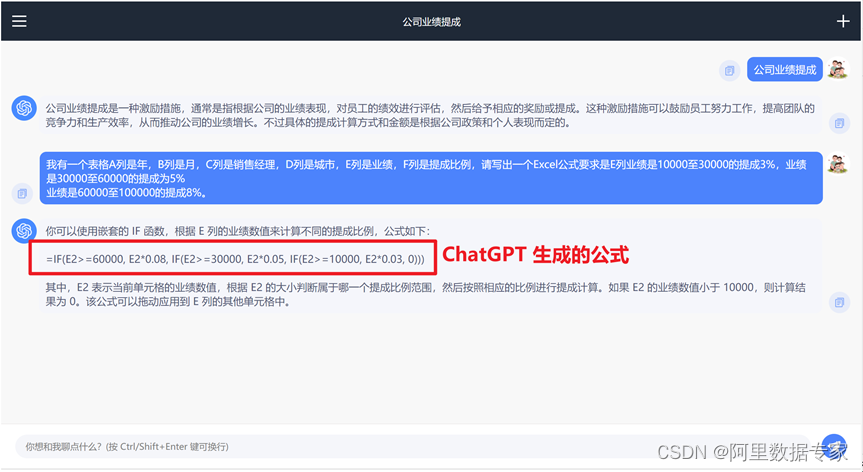
![[java进阶]——线程池的使用,自定义线程池](https://img-blog.csdnimg.cn/8541a96139ba46ee8a312797614a5a14.png)

